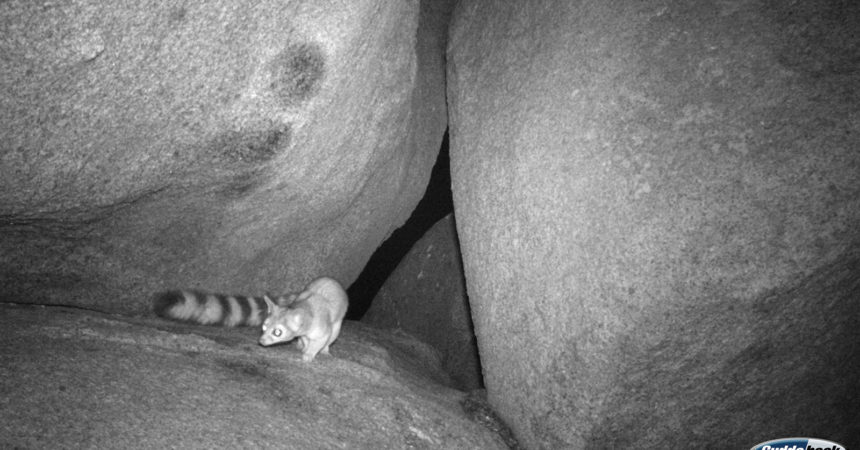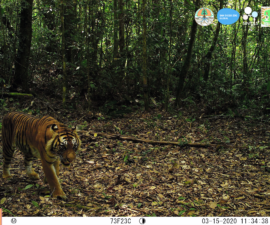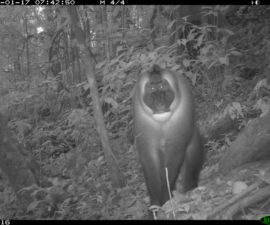San Diego Zoo Global’s mission to end extinction takes place not just at the Zoo, Park, and Institute for Conservation Research, but also through fieldwork in projects around the globe. “In the Field” stories share updates on these projects.
Likely the coolest mammal you’ve never seen, the nocturnal ringtail “cat,” which inhabits arid regions of the US and Mexico, is not a feline at all—it is part of the Procyonid family, along with raccoons, coatimundis, and kinkajous. With a slender, ferret-like body tapering to a long, fluffy, black-and-white banded tail, the ringtail Bassariscus astutus has many names: ring-tailed cat, miner’s cat, marv cat, or bassarisk. “Cat” was tacked onto their name allegedly by Gold Rush era miners who kept them around as mousers. Despite the ringtail’s considerable range and proximity to humans, little is known about this feisty omnivore’s ecology.
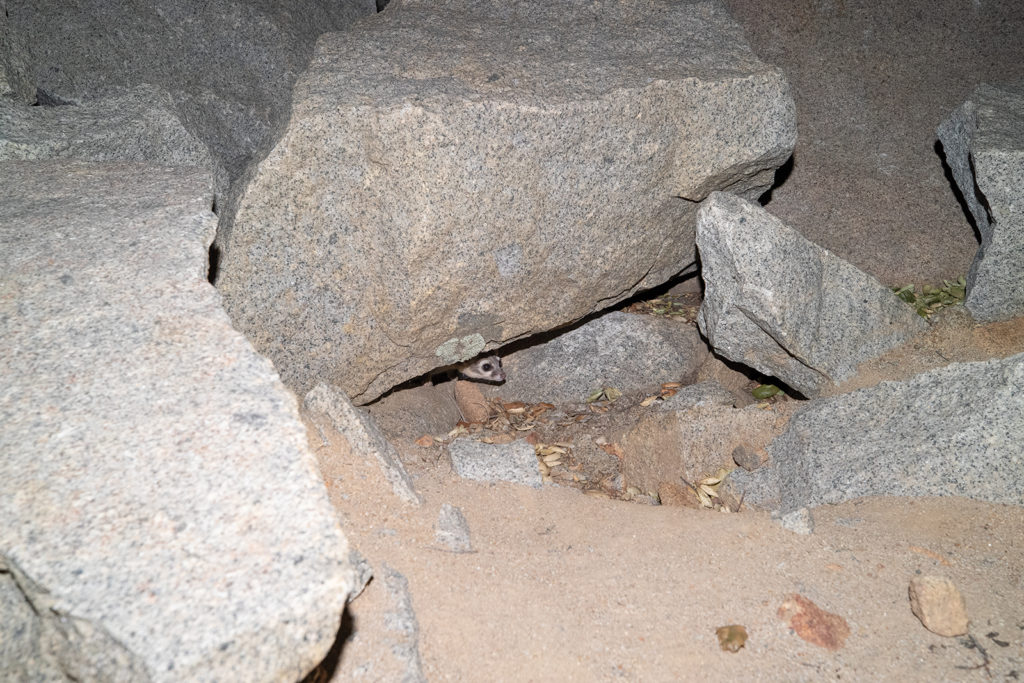
Recently, a collaborative project between the San Diego Zoo Institute for Conservation Research and the San Diego Natural History Museum got underway, to shed light on food choice, space use, and road mortalities that can occur in “hotspots.” Collected data will help determine whether wildlife corridors are a viable management option for this species.
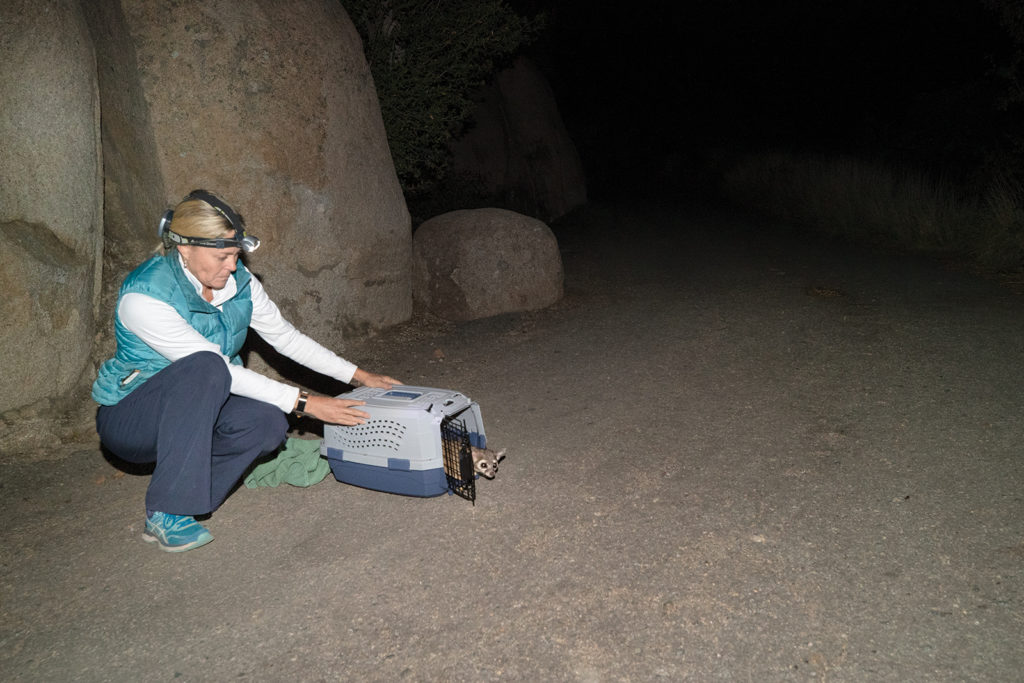
Researchers set up field cameras at Mount Woodson in Ramona, California to get a sense of the population. Images revealed ringtails, as well as skunks, foxes, and woodrats. Next, no-harm traps were set with strawberry jam to attract the ringtails. The animals were taken to the Safari Park’s Harter Veterinary Medical center, where veterinarians conducted a health assessment and collected samples of urine, blood, fur, and whiskers. Debra Shier, associate director of the Institute’s Recovery Ecology team, explained how consumption of different trophic levels (plant, herbivore, carnivore) is revealed in the body: blood shows what’s been eaten in the past 2 weeks; and whiskers reveal the animal’s diet from the past 3 months.
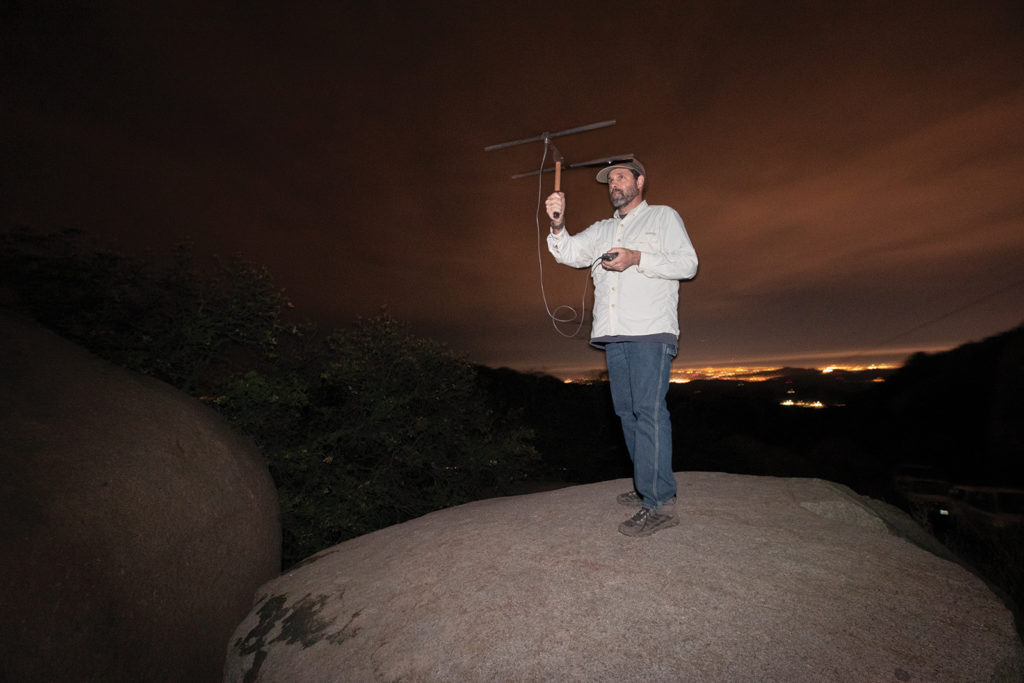
habitat and home range.
Some ringtails get GPS collars to record their coordinates, checked every other hour at night and once during the day. These reveal the animal’s range and use of space. Come nightfall, the animals are released where they were caught. Beneath a dome of stars, the released animal scurries from the crate into the jumble of boulders, then peeks back. “Rocks give him courage,” Debra whispers. With that, he darts up the rock face into the night.
Karyl Carmignani is a staff writer for San Diego Zoo Global. Read her previous blog, Panda Cub Number One.

